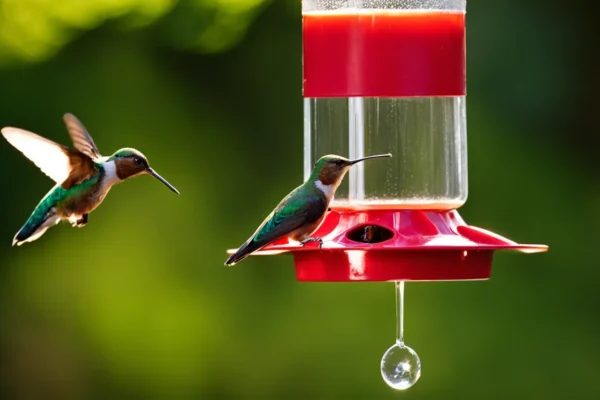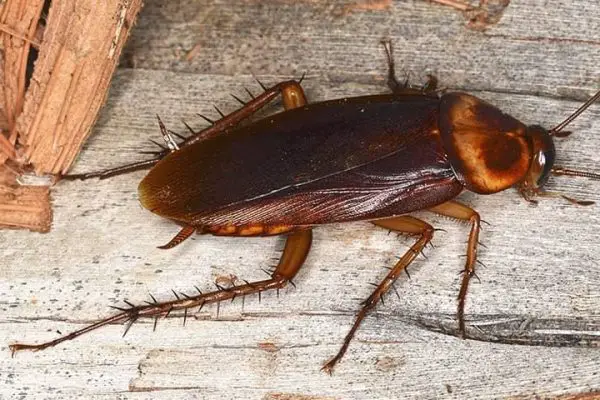If you’re someone who loves watching birds, you might have asked yourself if birds have tongues. Well, the answer is yes, all birds have tongues. Interestingly, many bird tongues look a lot like human tongues, even though they’re used for different things.
Also, different kinds of birds have different types of tongues that they use to find food. Some birds have tongues that are split at the end, while others have tongues with pointy parts facing backward.
These pointy parts help them push the food they gather down into their throats. Birds do this because they don’t swallow like we humans do.
A Bird’s Tongue: How It Works
Birds have tongues that work in various ways. Let’s explore these details more closely.
Bones
Every bird’s tongue contains bones and cartilage. This helps the tongue move easily and is known as the hyoid apparatus. Bigger tongues have stronger bones, while smaller tongues might have more cartilage.
Skin Layer
The outer layer of cells covering a bird’s tongue is called the epithelium. In some birds, the tip of the tongue has a toughened layer called the lingual nail.
Tough Tip
Certain birds like parrots, ducks, swans, geese, and chickens have a hard tip on their tongues, known as the lingual nail. It’s made of a substance called keratin. This nail-like tip helps these birds scoop up seeds and grains like a spoon.
Barb-like Structures
Birds of prey and geese have barb-like structures on their tongues known as papillae. These barbs point backward and assist in moving food toward the throat.
Saliva Glands
All bird tongues have saliva glands. Just like in humans, these glands produce saliva to fight bacteria and germs. The saliva also moistens the food, making it easier to break down.
Various Colors and Patterns
Similar to how bird tongues come in different sizes and shapes, they also display various colors and unique patterns. Some birds have tongues with spots or colored bands. Bird tongues can appear in colors like black, pink, and blue.
Different Kinds of Bird Tongues
Birds have different types of tongues that help them with various tasks based on where they live and what they eat. Here are some of the most common types of bird tongues.
1. Grooved Tongues:
Vultures and eagles have tongues with a groove down the middle. This groove lets them suck out the marrow from inside bones of the animals they eat. Since they might not find food often, they store lots of it in their throat’s storage organ called a crop. The groove helps them quickly move food into their crop.
2. Muscular Tongues:
Parrots have flexible tongues with a soft, pointy tip made of keratin. Their tongues can turn into a spoon shape, helping them hold seeds and grains in their mouths. Parrots’ tongue muscles also help them mimic human speech.
3. Sticky Tongues:
Woodpeckers have sticky tips on their tongues that help them catch insects from deep holes in tree trunks and branches.
4. Piston Tongues:
Birds like pigeons and flamingos have straw-like tongues that let them suck up water into their beaks without tilting their heads back.
5. Nectar-Sipping Tongues:
Hummingbirds use long, tube-like tongues to drink nectar from flowers and feeders. Some hummingbird tongues have tiny brush-like parts near the tip that quickly soak up nectar from flowers.
6. Lingual Nail:
This isn’t a specific type of tongue, but a feature on the tongues of ducks, quails, chickens, geese, and parrots. It’s a hard tip at the end of the tongue that can stretch and contract. This helps them pick up and hold onto grains and seeds without dropping them.
Also Read: Do Birds Kiss?
Different Types of Bird Tongues for Different Jobs
Because there are many different kinds of birds in the world, their tongues are also different. This is because each bird type eats different things. Let’s explore some interesting tongue facts!
1. Hummingbird Tongues
Hummingbirds have long, thin tongues that split at the end. This helps them get nectar from flowers. When they put their tongue in a flower, the ends open up like a straw to collect nectar. They use a trick called capillary action to move the nectar up their tongue and into their throat.
2. Woodpecker Tongues
Woodpeckers have long tongues that can reach far. Some have tongues with tiny barbs or sticky stuff. This helps them catch insects hidden in tree cracks and under bark. They can even use their barbs like spears to catch bugs.
3. Birds of Prey Tongues
Hawks, eagles, owls, and vultures have big, fleshy tongues. They tear their prey with their beaks and claws. These birds have spiky parts at the back of their tongues, pointing backward. This helps them swallow prey. Vultures have these spiky parts on the sides of their tongues. This helps them strip the meat off carcasses.
4. Penguin Tongues
Penguins eat slippery fish. Their tongues have tiny spines like barbs, called papillae. These spines are sharp but bendy, kind of like small teeth. They help penguins hold onto fish.
5. Duck Tongues
Ducks also have spines on their tongues, but not as much. Ducks search for food in mud and water. They use their tongues like a pump to get food. They press their tongue against the roof of their mouth to get rid of mud and water, keeping only the food.
6. Nectar Lovers
Birds like parrots and lorikeets have bumpy tongues that look like brushes. This helps them collect more nectar from flowers.
7. Flightless Bird Tongues
Birds like emus, ostriches, and kiwis can’t fly. Their tongues are small and not very important for eating or catching food.
Do Birds Taste Things with Their Tongues?
Yes, birds do have taste buds, but not as many as humans do. For example, parrots might have around 300 to 400 taste buds, pigeons could have around 27 to 59, and chickens only have 24 taste buds. This is quite different from humans who have over 10,000 taste buds, mainly on our tongues.
Birds place their taste buds on the roof or bottom of their mouths, or at the very back of their tongues. Studies have found that birds can detect both sweet and savory flavors, like salt, sugar, brine, and fats.
Summing Up
Now you’re aware that all birds have tongues. These tongues come in different sizes and shapes, just like the birds themselves. Most birds use their tongues to help them eat.
Bird tongues are quite interesting. Some have a hard tip made of keratin, while others have backward-pointing barbs to help move food down. Woodpeckers even have sticky stuff on their tongues to catch insects.
While birds do have taste buds, they don’t have as many as humans. But they can still taste sweet and salty foods.
What Do Birds Do with Their Tongues?
Birds use their tongues for important tasks related to finding food and helping with digestion. Their tongues are adapted differently for various purposes, such as drinking, sipping nectar, scooping up seeds, and catching insects.
Many birds that eat fish, like certain types of ducks, filter out mud from water. Their tongues are crucial for this process. These birds push their tongues down to get rid of unwanted mud and water while keeping the food.
Which Birds Have the Longest Tongues?
The Northern Flicker, a woodpecker from North America, holds the record for the longest tongue among birds. It reaches up to 10 cm (4 inches) from the tip of its beak and can coil inside its skull.
Woodpeckers often have long tongues, and there might be other birds with even longer tongues that scientists haven’t measured yet.
Do Birds Use Their Tongues to Sing?
A bird’s mouth and throat have a complex system of organs that work together to create calls and songs. Birdsong comes from an organ called a syrinx at the base of the trachea. While the tongue and larynx are part of a bird’s vocal system, they help modify the sounds produced by the syrinx.
Some birds, like parrots, cockatiels, and cockatoos, make clicking sounds with their tongues, often as a friendly gesture.
Parrots use their tongues to imitate human speech. The muscles in their tongues are flexible, allowing them to create a wide range of sounds.
Faqs
Do Crows Have Tongues?
Yes, crows have tongues like all other birds. Their tongues are small and not very movable. This affects the sounds they can make when they make noise.
Even though their tongues don’t move much, crows can still make lots of different sounds by changing their beak’s shape. Their beaks can open and close quickly, making various clicks, caws, and other noises.
Do Pigeons Have Tongues?
Pigeons actually have a tongue that works like a piston. It’s attached to the bottom of their mouths and has tiny spines pointing backward. These help pigeons drink water fast.
This special tongue also helps pigeons eat seeds and small foods. The spines hold onto the seeds so pigeons can swallow them whole.
Do Budgies Have Tongues?
Yes, budgies have tongues! These small birds use their tongues for many things, like grooming, eating, and drinking. Their tongue also plays a part in the sounds they make.
Budgies’ tongues are important. They’re long and narrow, covered in small hooks called papillae. These hooks help budgies hold onto seed shells and small stuff.
Budgies also clean their beaks using their tongues.
Do Ducks Have Tongues?
Absolutely, ducks have tongues. Ducks have long, thin tongues that help them clean their feathers. They also use their tongues to grab and bring food to their mouth.
While ducks’ tongues might not be as noticeable, they’re vital. Ducks use them for eating, drinking, and taking care of their feathers.
Do Eagles Have Tongues?
Eagles do have tongues. Their tongues are short, thin, and slightly curved. They’re covered in little bumps called papillae, which help them hold onto food and swallow it. Eagles eat both meat and fish.
Unlike many birds that use their beaks to tear food, eagles use their strong talons to rip prey apart. Then their tongues help them push the food into their throats while the papillae keep it in place for swallowing.
Do Penguins Have Tongues?
Yes, penguins have tongues that serve different purposes. Penguins’ tongues are small and have bristles made of keratin.
These bristles help them catch and push food down their throats. Penguins also use their tongues to clean their beaks and groom their feathers.
Do Seagulls Have Tongues?
Indeed, seagulls have tongues. Their tongues are triangular and help them eat their favorite food: small fish. Since seagulls can’t chew, their tongues help break down the food.
Seagulls also use their tongues to drink water. They dip their tongues and suck up water, staying hydrated.
Lastly, seagulls use their tongues to groom. Their tongues reach parts of their feathers that their beaks can’t. This helps them stay clean and neat.


![35 Birds that Start with P [Images + IDs]](https://birdsology.com/wp-content/uploads/2023/05/7652995730_d8dcc9e630_b-600x400.jpg)



